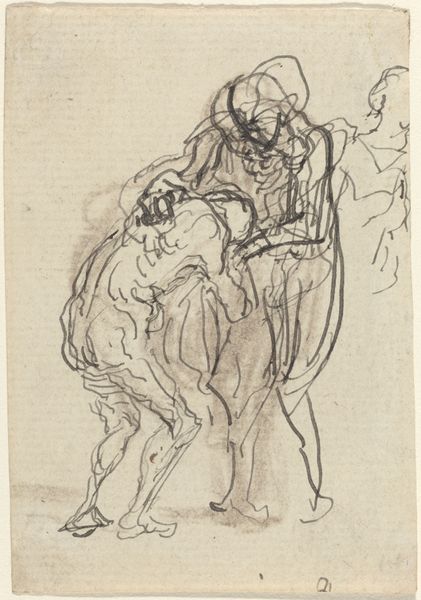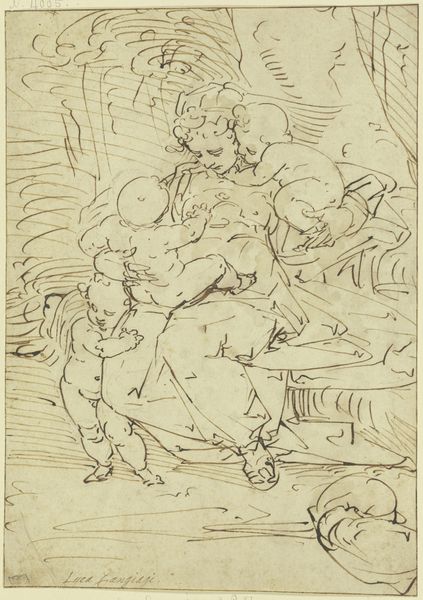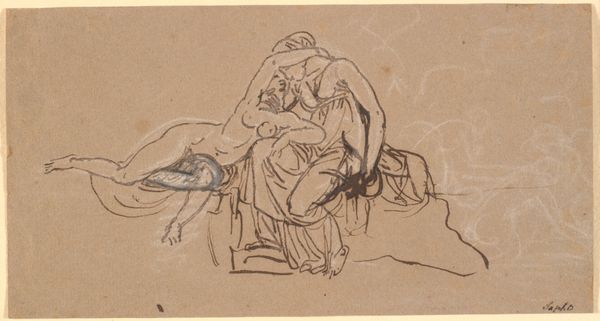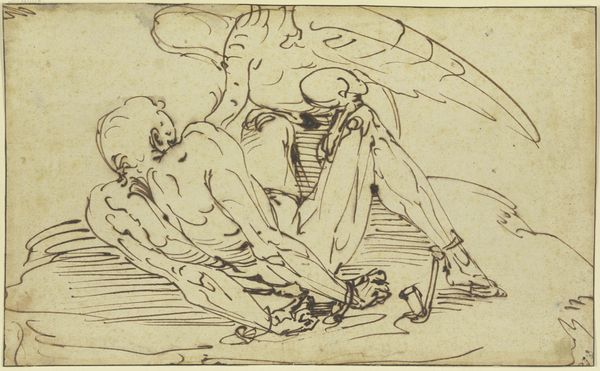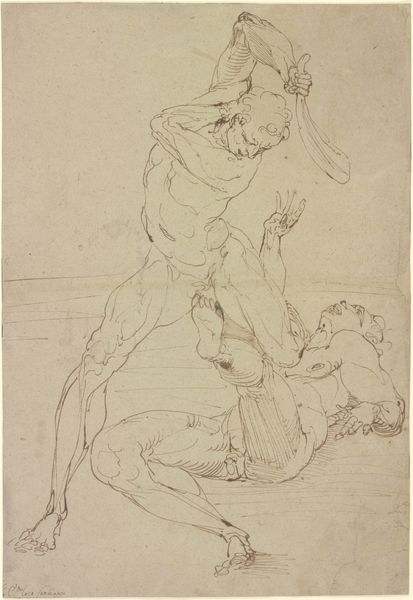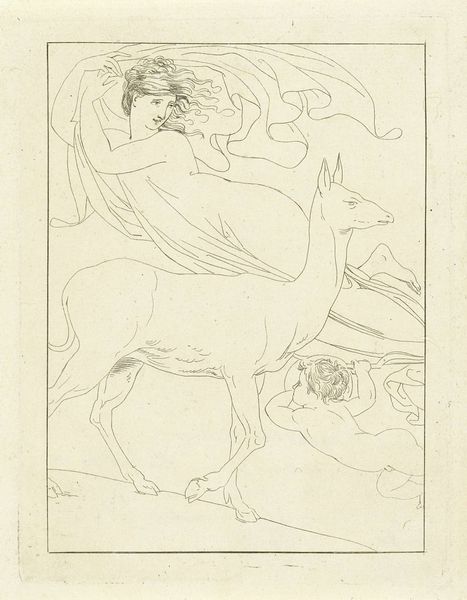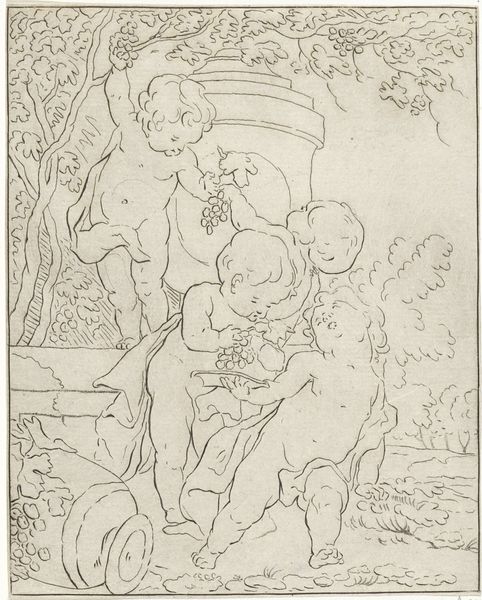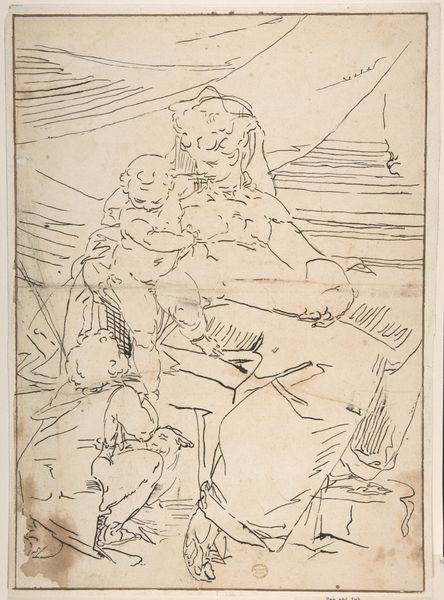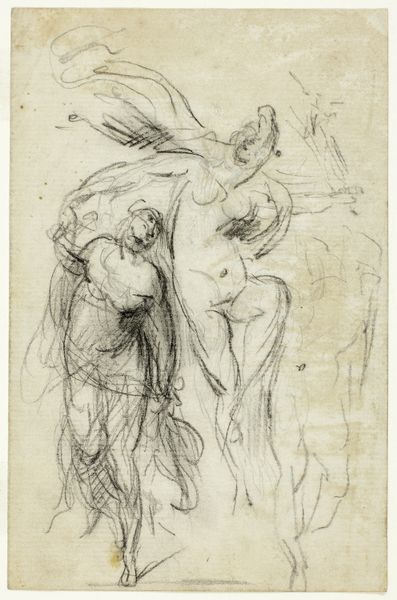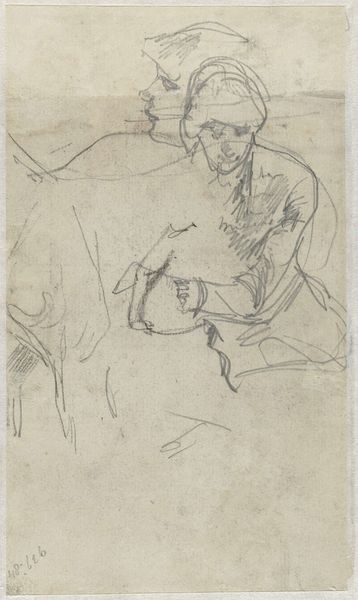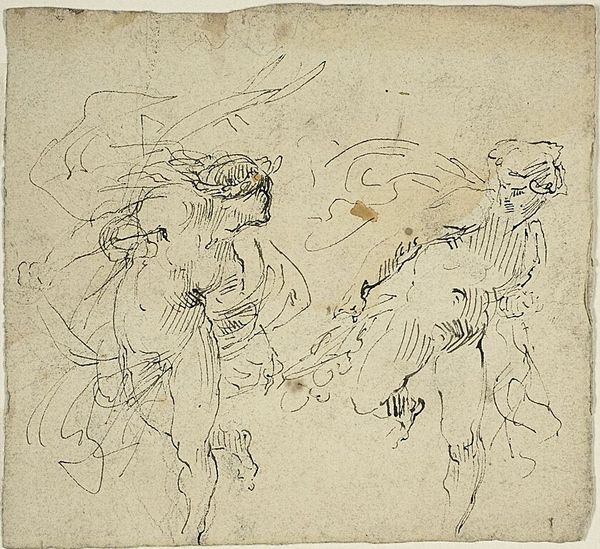
drawing, ink
#
drawing
#
ink drawing
#
baroque
#
ink painting
#
figuration
#
ink
#
history-painting
#
nude
Copyright: Public Domain: Artvee
Curator: This is "Venus Lamenting Adonis," a drawing by Peter Paul Rubens, dating back to about 1608-1612. It’s rendered in ink, a study really, full of movement. Editor: My immediate impression is one of raw emotion, a grief so intense it feels palpable even through the somewhat hurried lines of the sketch. Curator: The medium, ink on paper, is so crucial here. It speaks to the directness of Rubens' process, how he captured the dynamism of the scene, almost like a news report from the ancient world. Consider how widely available and how relatively cheap ink was during the 17th century in the North, allowing a wide group of makers to realize art on this media and contribute to cultural discourse and social commentary. Editor: Exactly! And look at how Rubens portrays Venus – she’s not a detached goddess, but a grieving lover. I can't help but read her anguish as reflecting broader societal anxieties. How often are women in positions of power stripped down to vulnerability when confronting death? Where can women draw strength from these gendered expectations that dictate their role when death presents itself? Curator: That rawness stems, I think, from the gestural quality of the line. The loose, almost frenzied application of ink speaks to an exploration of feeling in the very act of creation. The process is evident, almost brutally so. Editor: Precisely, that act of creating mirrors the historical and social constructs that elevate men, and leave women bereft during moments of sorrow or tragedy. We read in this Baroque composition not just grief but resistance against passive grieving. There's that implied struggle inherent in it all. The raw emotion here becomes almost an act of protest, refusing to succumb to expected gender norms in grief. It reminds us of the Madonna-Whore Complex that exists until today, for example. Curator: I appreciate you saying this. For me, it comes down to Rubens' manipulation of materials. He uses the ink not to perfectly depict Venus, but to get closer to expressing loss through materiality itself. Editor: In its unpolished quality, the sketch lays bare both artistic process and the vulnerabilities of societal narratives. It transforms a classical myth into a very urgent critique. Curator: It’s a study that transcends the initial mythological subject to resonate on multiple levels. Editor: Ultimately, “Venus Lamenting Adonis” makes us contemplate about a period in art that we still echo to this day.
Comments
No comments
Be the first to comment and join the conversation on the ultimate creative platform.

